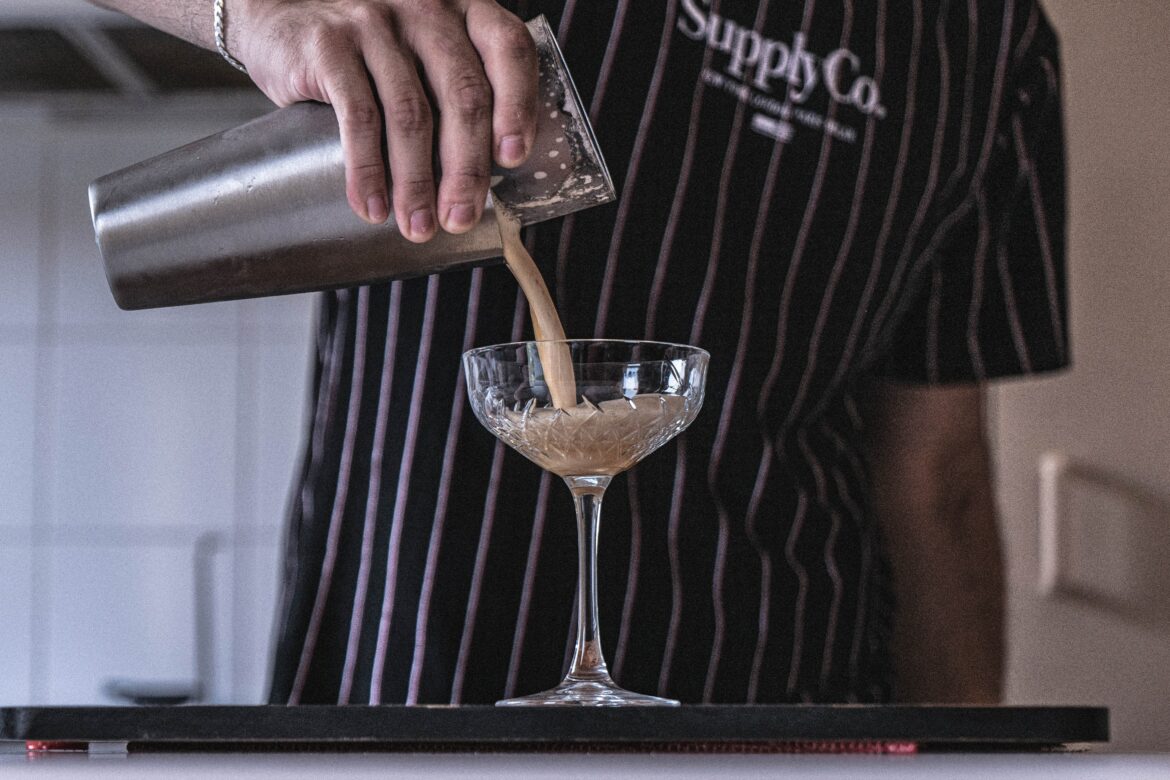Making a Sidecar for yourself or a friend is, at its best, sexy and impressive. At its worst, the drink you produce is either too strong or too sour or too sweet, which one of you will probably still gulp down out of stubbornness or politeness.
Learning how to shake and stir cocktails at home is like any other hobby: it’s a learning experience, and you only get better through practice. However, there are some secrets to building an at-home bar, which involves stealing secrets from people who make drinks for a living. To help you be the best amateur bartender you can be, we spoke to Lucinda Sterling of Middle Branch, Julie Reiner of Clover Club and Leyenda, and Karen Fu of Donna—some of the best of the very best—to find out how to make drinks that you wouldn’t be ashamed of passing to your partner’s dad or a first date.
The most important ingredient is in your freezer.
While not as impressive as a beautiful bottle of Carpano Antica vermouth or set of coupe glasses, the one component that can perfect or completely spoil your cocktail game is also the most unassuming: ice. “People forget that ice is one of the most important ingredients in a cocktail,” Reiner says, and Sterling agrees. They both swear by the brand Tovolo, which can cater to your normal-size ice needs or enable you to make those impressive two-inch cubes that fit one per glass. Also, when making a drink, always remember to shake and stir with normal-sized cubes (if they’re too small, they’ll break down too quickly and make your drink watery), and then pour over new cubes.
What to put in your cart.
Per Sterling’s recommendations: Angostura and Peychaud’s bitters, Elijah Craig bourbon, Rittenhouse rye, Beefeater gin (or if you want something off the beaten path, Botanist Islay Dry Gin), and a vodka and rum of your choice. Sterling also loves L’Original Combier’s Triple Sec, as it opens up spirits like gin, whiskey and cognac. What you shouldn’t put in your cart: vermouth. “You have to refrigerate it because it goes bad,” Reiner says. “You know when you go to grandma’s place and there’s vermouth that’s been open since 1955? Yeah.”
You’re at home—don’t go big.
When it comes to stocking your bar cart, less is more, and bigger isn’t always better. Because you’re just starting out and figuring out what you like, Reiner suggests buying smaller bottles of booze; you may think you love rye, but do you? And if you know you really don’t like drinks with rum, you don’t have to buy it—invest in what you’ll actually use.
Don’t get too cocky too fast.
A mojito may be your go-to summer drink, but if you haven’t yet mastered a daiquiri, maybe try your hand at the latter three-ingredient drink before attempting a five-ingredient cocktail that even bartenders hate to make. “Start with the classics,” Reiner says. “That’s how we do it in the bars. Don’t make things before you understand how cocktails are built.” Once you understand the basic formula and how components like bitters, twists and vermouth can alter a drink’s flavor profile, then you can start to intuitively experiment. If you start with too many ingredients and don’t understand what you’re doing, you’ll likely end up with a muddled, overdone drink.
Beautiful isn’t always better.
While Crate and Barrel may sell convenient, decorated and reasonably priced cocktail sets, step away from the engraved shaker and ornate bar spoon. “Specially plated stainless steel tools, whether they be copper or gunmetal black, are beautiful as at-home collector’s items but aren’t practical for everyday wear-and-tear behind a busy bar, as the outer coat chips away,” Fu says. “[Likewise], bar spoons with extra flair, or variance in size…may not be an accurate measurement.” To stock your bar cart like a pro, Sterling suggests Bar Products and The Modern Mixologist—the latter of which Sterling also recommends, along with Cocktail Kingdom. What’s worth investing in: a PUG! Wooden muddler, a cocktail shaker (Reiner likes two-piece sets that don’t have the built-in strainer), a nice strainer, a paring knife for twists, a bar spoon and a set of coupes.



